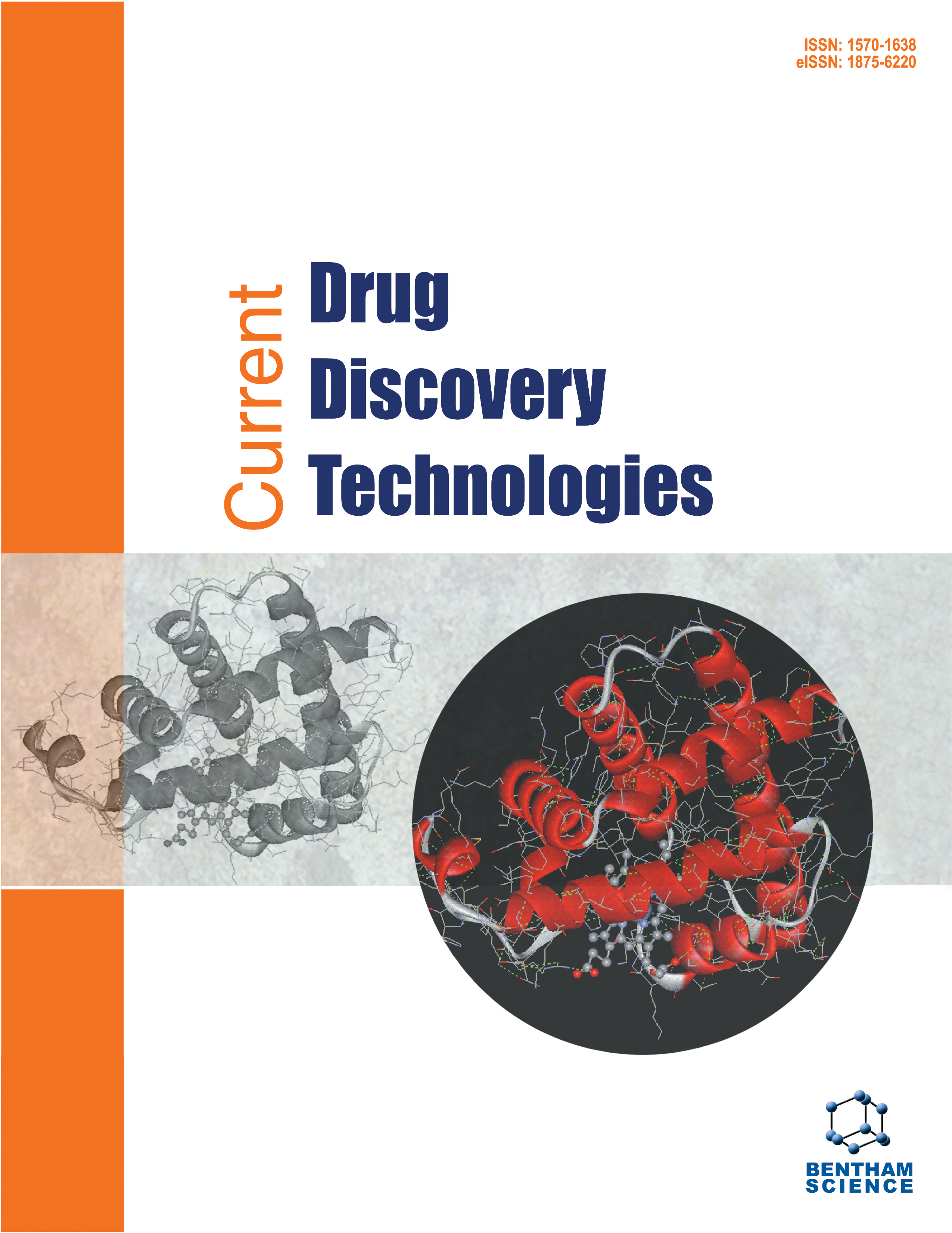- Home
- A-Z Publications
- Current Drug Discovery Technologies
- Previous Issues
- Volume 14, Issue 4, 2017
Current Drug Discovery Technologies - Volume 14, Issue 4, 2017
Volume 14, Issue 4, 2017
-
-
Compound Libraries: Recent Advances and Their Applications in Drug Discovery
More LessAuthors: Zhen Gong, Guoping Hu, Qiang Li, Zhiguo Liu, Fei Wang, Xuejin Zhang, Jian Xiong, Peng Li, Yan Xu, Rujian Ma, Shuhui Chen and Jian LiBackground: Hit identification is the starting point of small-molecule drug discovery and is therefore very important to the pharmaceutical industry. One of the most important approaches to identify a new hit is to screen a compound library using an in vitro assay. High-throughput screening has made great contributions to drug discovery since the 1990s but requires expensive equipment and facilities, and its success depends on Read More
-
-
-
Utilization of the Monte Carlo Method to Build up QSAR Models for Hemolysis and Cytotoxicity of Antimicrobial Peptides
More LessAuthors: Alla P. Toropova, Andrey A. Toropov, Marten Beeg, Marco Gobbi and Mario SalmonaBackground: Traditional quantitative structure - property / activity relationships (QSPRs/QSARs) are based on representation of molecular structure by molecular graph or simplified molecular input-line entry system (SMILES). It is an attractive idea to develop predictive models for large molecules in general and for peptides in particular. However, the representation of these molecules by molecular graph or SMILES is pro Read More
-
-
-
Prediction of Human Intestinal Absorption of Compounds Using Artificial Intelligence Techniques
More LessAuthors: Rajnish Kumar, Anju Sharma, Mohammed H. Siddiqui and Rajesh Kumar TiwariBackground: Information about Pharmacokinetics of compounds is an essential component of drug design and development. Modeling the pharmacokinetic properties require identification of the factors effecting absorption, distribution, metabolism and excretion of compounds. There have been continuous attempts in the prediction of intestinal absorption of compounds using various Artificial intelligence methods in th Read More
-
-
-
Design, Synthesis and Molecular Docking of 1-Cyclopropyl-6- Fluoro-4-Oxo-7-{4-[2-(4-Substituted-Phenyl)-2-(Substituted)-Ethyl] -1-Piperazinyl}-1,4-Dihydroquinoline-3-Carboxylic Acid as an Antimicrobial Agents
More LessAuthors: Mehul M. Patel and Laxman J. PatelBackground: Quinolone scaffolds are widely used for the synthesis of a number of medicinal compounds with variety of biological activity. In view of the reported antimicrobial activity of various fluoroquinolones, the structure activity studies of various substituted quinolones, which proved the importance of the C-7 substituents to exhibit potent antimicrobial activities. Objective: Based on the structural activity relationship at C-7 Read More
-
-
-
Flavonoid Enriched Fraction of Campylandra aurantiaca Attenuates Carbon Tetrachloride Induced Oxidative DNA Damage in Mouse Peritoneal Macrophages in Animal Model
More LessAuthors: Mainak Chakraborty, Asis Bala and Pallab K. HaldarBackground: Recent studies have sought to draw attention of biological activity of Campylandra aurantiaca. The aim of the present study was to evaluate the effect of flavonoid enriched fraction of Campylandra aurantiaca (FEFCA) on in vitro and in vivo antioxidant and DNA protective effect in mouse peritoneal macrophages cells. Methods: FEFCAwas characterized by HPLC analysis. The in vitro antioxidant activities of FEFCA wa Read More
-
-
-
In Vivo Hypoglycemic Studies of Polyherbal Phytoceuticals, Their Pharmacokinetic Studies and Dose Extrapolation by Allometric Scaling
More LessAuthors: Baishakhi De, Koushik Bhandari, Prakash Katakam and Analava MitraBackground: This work reports the safety profiling, in vivo hypoglycemic and pharmacokinetic studies of three phytoceuticals viz. conventional and sustained release tablets and microspheres each containing a polyherbal product phytocomposite (PHC) as the active ingredient. PHC is prepared from the leaf extracts of Ficus benghalensis: Syzigium cumini: Ocimum sanctum mixed in the weight ratio of 1:1:2. Further no observed Read More
-
Volumes & issues
-
Volume 22 (2025)
-
Volume 21 (2024)
-
Volume 20 (2023)
-
Volume 19 (2022)
-
Volume 18 (2021)
-
Volume 17 (2020)
-
Volume 16 (2019)
-
Volume 15 (2018)
-
Volume 14 (2017)
-
Volume 13 (2016)
-
Volume 12 (2015)
-
Volume 11 (2014)
-
Volume 10 (2013)
-
Volume 9 (2012)
-
Volume 8 (2011)
-
Volume 7 (2010)
-
Volume 6 (2009)
-
Volume 5 (2008)
-
Volume 4 (2007)
-
Volume 3 (2006)
-
Volume 2 (2005)
-
Volume 1 (2004)
Most Read This Month
Article
content/journals/cddt
Journal
10
5
false
en


